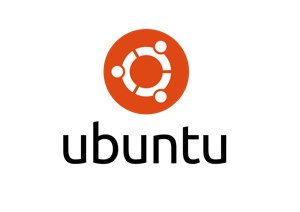It seems to be popular these days to vilify Ubuntu as a distro because of the recent change to the Unity desktop. We are told the change was made for the purpose of re-creating Ubuntu in the form of a gadget-agnostic operating system, equally usable and familiar on a phone, a tablet, and a desktop. Never mind that each of those digital devices was invented to serve a need that at the time was unfulfilled by the others, or that their screens are radically different in size. They must look as though they are members of the same family.
 To that degree, I’ll gladly place myself firmly in the camp of the vilifiers. I don’t like the idea, I have no intention of making use of it, and I am certainly not convinced that it will bring hordes of new users to Linux. But I am not one of those who claim that because of these changes Ubuntu is no longer a suitable distro for a Linux fan, that it is too commercial, that it does not have the flexibility a Linux distro should have.
To that degree, I’ll gladly place myself firmly in the camp of the vilifiers. I don’t like the idea, I have no intention of making use of it, and I am certainly not convinced that it will bring hordes of new users to Linux. But I am not one of those who claim that because of these changes Ubuntu is no longer a suitable distro for a Linux fan, that it is too commercial, that it does not have the flexibility a Linux distro should have.
Granted, I am certainly not one of the hard-core retired Unixers who think in C++ and regard a GUI as a crime against humanity. Though I’ve been Windows-free and using various Linux distros for four years now, I still work more in GUI than CLI, and in my view the fundamental structure of Ubuntu is sound, adaptable, reasonably stable, and easy to shape into a form one likes. You just have to dig down one layer below the Unity desktop to do it.
Install a Unity Alternative
That, of course, is almost embarrassingly easy, since relief from the oddly-structured constraints that Unity imposes on your work habits is only an apt-get install away. Do you like an extra-light desktop? Use
apt-get install lubuntu-desktop
Love wobbly windows and a transparent cube with all six faces in use?
apt-get install kubuntu-desktop.
Something between those extremes, just clean and powerful?
apt-get install xubuntu-desktop.
On your part, all you are required to do is twiddle your thumbs while the necessary packages are downloaded and installed, and when it’s done you can log in to a very different experience than Unity offered you. Furthermore, if what you installed on your computer was the full Ubuntu version, all the software it included is still accessible to you through your new desktop. For example, in the modest, nearly bare-bones Lubuntu menu, click on Other: you will see a list of available programs and utilities that runs well beyond the height of your monitor.
For that matter, if you are even more CLI-averse than I am you can get any of those desktops from the Software Center; it’s just that the downloading and installing process from the Software Center runs as a deep, dark mystery, showing only a progress bar up in the corner of the screen. The apt-get process remains fully visible on the terminal – what you see is what you get.
It’s really a shame – there is so much more to Ubuntu than the Unity desktop would suggest. It is, in its basic form, simply a variant of Debian, fitted out with a highly simplified installation scheme and privy to an extensive repository of programs and applications. I just cannot understand the logic behind placing all those restrictions on the behavior of Ubuntu that the Unity desktop seems to require, when such rich variety is available otherwise.





